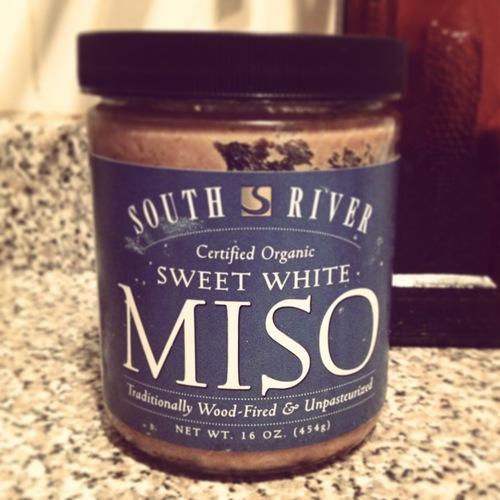While living in Japan, I picked up the habit of eating miso soup for breakfast.
But it wasn't until a few years ago that I started using bone broth instead of water as my base. Needless to say, my little habit kicked up into a full blown addiction. Even in summer, there's something about starting your day with a bowl of nourishment and cup of green tea that makes it worth getting up in the morning. It's protein rich, nutrient dense, and probiotic heaven - what's not to love?
Miso is an amazing source of iron, calcium, potassium, B vitamins and protein. Made from fermented soybeans, it's high in complete proteins and contains essential amino acids. Soybeans consist of about 20% oil and are an excellent source of polyunsaturated fats, which are so beneficial that the FDA has recognized its ability to lower “bad” cholesterol.
It's the magical process of double fermentation that transforms the lowly soybean into a digestive force of nature. The fermentation process not only breaks down the complex proteins, oils and carbohydrates found in miso, but the fermentation aids in the digestive process. Because of the fermentation, lactobacilli runs rampant - which helps the body absorb nutrients while promoting a healthy pH in the gut.
THE PANTRY AS MEDICINE CABINET
Another beautiful thing about miso soup is that it acts as the perfect base for anything your heart desires or your body needs:
Feeling a little creaky when getting out of bed? Add some freshly grated turmeric.
Stomach not happy with you? A few slices of fresh ginger will set it it right.
Iron deficient? Add some spinach.
Not enough oil in the diet? Add some Udo's or sesame oil.
Need more fiber? Soba or shirataki noodles are amazing additions.
A TASTE FOR EVERY SEASON
As with most things in Japan, there's a whole art to miso and there are hundreds of different types. To help you avoid overwhelm; there are 3 basic types that are easiest to use:
White Miso (Shiro Miso) (which is actually light yellow in color) is made with fermented soy beans and rice. It’s fermented for a short period of time (i.e. just a few weeks), leaving it with a mild sweet taste. Being the most mild kind of miso, it’s also the most versatile.
Yellow Miso (Shinshu Miso) is often made with fermented soybeans and barley - something to watch for if you're gluten free. It’s slightly stronger than white miso, but not as strong as red.
Red Miso (Aka Miso) is the saltiest, most pungent variety - and amazing in winter. You only need a little bit to add some serious umami to your life. It’s typically made with fermented soybeans and barley or another grain. It ranges from dark brown to red in color.
SOY FREE? GLUTEN FREE? NO PROBLEM!
For those of you who are gluten free, no doubt you're already a label reading pro. So this should come only as a gentle reminder that miso labels need to be read with a laser eyre. Miso, especially the instant variety, often contains barely, rye, or wheat (sometimes as soy sauce) - all of which contain gluten. However, many brands use rice, buckwheat, chickpeas, adzuki, or millet instead. Hikari organic white miso is particular favorite of ours!
Soy-Free miso is a bit harder to find - but not impossible. South River Miso Company and Miso Master both make chickpea based miso pastes.
INGREDIENTS
1 cup bone broth
1/2 cup water
1 1/2 tablespoons miso
1 large egg
Freshly ground pepper (helps the body absorb)
A little bit of anything your heart desires or body needs
HOW TO COOK
1. Bring the bone broth and water to a simmer in a saucepan.
2. Whisk in your miso of choice until it dissolves completely; be sure to not let the mixture come to a boil.
3. Gently crack an egg into a seperate small bowl, then gently slide it into the simmering broth. Cook until the egg white is set and the yolk is still runny, about 2 minutes.
4. Season with pepper; add anything else that you crave!



